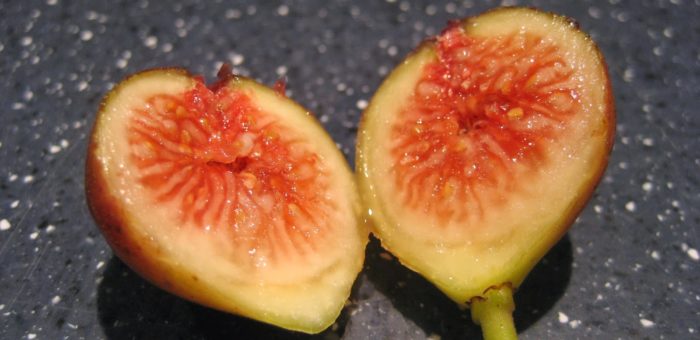On Becoming a Fig
It’s a year to the day since my home was filled with standing-room-only Jewish and Muslim friends celebrating the Jewish holiday of Tu b’Shevat.
Even though the Jews didn’t know the Muslims and the Muslims didn’t know the Jews, all the guests were my friends. And all my friends are extraordinary.
Sitting knee to knee in my crowded living room, this amalgam of Strangers and Friends soon became a circle of Friends. We shared stories, ate, and prayed together. It was fabulous.
For most of the Jews (me included) and all of my Muslim friends, this was our first Tu b’Shevat seder.
Yes, the observance of Tu b’Shevat revolves around a seder. You may automatically think of Passover when you hear the word seder, but the word seder simply means order. And there’s an order to a Tu b’Shevat celebration (just as there’s an order to a Passover celebration.)
Today, January 15-16, 2014, is Tu b’Shevat. It’s the New Year of the Trees and one of four new years in the Jewish calendar. Think of it as a Jewish Arbor Day. Tu b’Shevat acknowledges the wonders and abundance of the natural world and recognizes—and recreates through the seder—seasonal transitions.
It’s a time to reflect, also, on personal transitions.
A Tu b’Shevat seder traditionally includes three courses of fruits, nuts, and vegetables.
The first course entails an assortment of items that have a hard outer shell and contain an edible interior. On small plates, I served almonds, walnuts, and pomegranates.
The next course is made up of fruits and vegetables that are soft and edible on the outside but have a seed or pit inside. We ate olives, apricots, and dates.
The final course included items that were consumable in their entirety. Berries, grapes, and figs.
Four cups of wine are also consumed during the seder.
The first cup of wine is white wine. It symbolizes winter. The second cup is white wine with a little red wine added. Now we’re starting to see the changing seasons. The third cup of wine is half red and half white, a continuation of the passage of time. The fourth cup of wine is all red marking the arrival of autumn, the fire of the Universe, and that spark of the Divine in each of us. [Since our celebration included Muslims, I substituted white and red grape juice for wine.]
Tu b’Shevat is loaded with symbolism. In fact, I’ve only scratched the surface of the meaning and practices surrounding this holiday. (I expect I’ll be chastised for omitting the seven species, references to the Garden of Eden, or neglecting the blessings and other teachings that accompany the holiday.)
But I want to stay with the courses. That’s what resonates.
For me, the first course of nuts and pomegranates reflects our day-to-day humanity. We’re hard on the outside. Protecting ourselves. Not letting anything in. Our exterior is tough, but, ironically, only the vulnerable need armor. When we crack open that defense, however difficult that might be, when we peel away the outer layer of protection, we find the delightful essence of who we are.
Seasons pass. We become softer on the outside. We’re more trusting. More malleable. But inside, we’re still hard. Like the olive and date, we hold onto an unbreakable center. Nothing’s getting all the way through. We harden ourselves at our very core. Our squishy exterior belies a reinforced, often cynical, interior.
More time passes. Winter becomes spring. Spring turns into summer. We mature. It’s autumn.
Life experiences, our own determination, and, for some, the grace of God, bring about a long-awaited confidence and ease. Eventually faith or self-reliance help us open up to a full experience of life. We’re on the third course. No pretense. We’re authentic through and through.
We’re figs.
Our faith traditions embrace figs.
Figs were in the Garden of Eden.
Figs are in the Qur’an. Surah [chapter] 95 is called The Fig.
Buddha was sitting under a Bodhi, a sacred fig tree, when he achieved enlightenment.
At this time of year, as we celebrate Tu b’Shevat, I’m jubilant. I’m reflective. And I’m a grateful fig.
Comments are closed.




